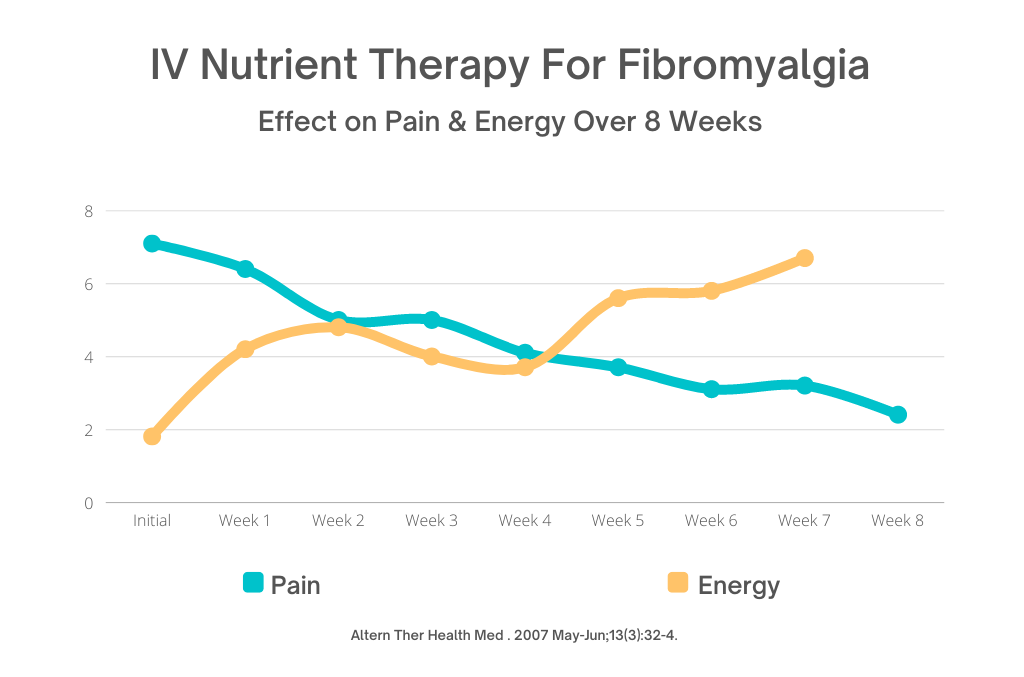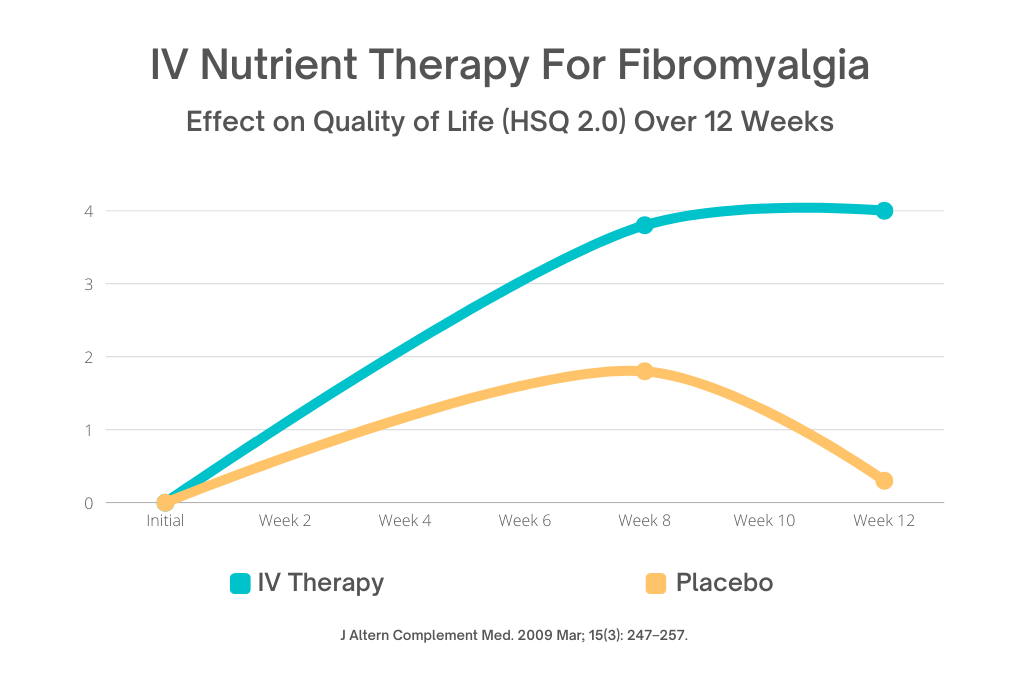

Symptoms of Fibromyalgia
Fibromyalgia is a condition that is characterized by a diverse range of symptoms: widespread musculoskeletal pain, unexplained fatigue and impaired cognitive function are some of the most characteristic. Like many chronic pain disorders, mood and sleep disturbances are common among people with fibromyalgia.
Causes of Fibromyalgia
The cause of fibromyalgia is still not clear. Current research suggests that fibromyalgia may be a central sensitization syndrome, meaning that the condition causes a disruption in a person’s ability to process pain sensations accurately. These neurosensory alterations may cause the experience of pain to be heightened in people with fibromyalgia compared with healthy people1,2.
Risk Factors for Fibromyalgia

Current research suggests that a genetic predisposition for fibromyalgia may exist, however a definitive gene has not been discovered3. Despite the lack of evidence to suggest a direct cause of fibromyalgia, multiple physical and/or emotional stressors likely contribute to triggering the onset of symptoms. This suggests that there is an underlying predisposition to the condition that medical science does not yet fully understand.
Fibromyalgia more commonly affects women compared to men. The prevalence of fibromyalgia is estimated to be 1-2% of the population, where 3.4% of women and 0.5% of men are diagnosed4.
Additional risk factors for fibromyalgia include being at or above middle age, smoking, high body mass index and pre-existing medical disorders in adulthood. The strongest associations with pre-existing medical conditions being sleep disorders, chronic headaches/migraines, and depression5.
Diagnosing Fibromyalgia
The most used diagnostic tool for fibromyalgia is the American College of Rheumatology preliminary diagnostic criteria for fibromyalgia and measurement of symptom severity. According to this measure the individual meets the diagnostic criteria for fibromyalgia if the following three conditions are met:
- Widespread pain index (WPI) is 7 and symptom severity scale (SSS) score is 5, or WPI equals 3 to 6, and SS scale score of 9.
- WPI is a questionnaire that is administered to the patient to determine the number of areas that pain has been experienced in the previous week (e.g.: left shoulder girdle, right hip, left upper back, etc.). The score will be between 0 and 19.
- SSS score is a questionnaire that is administered to the patient inquiring about their experience with fatigue, waking unrefreshed and cognitive symptoms. The severity of each of these symptoms over the previous week is ranked between 0 and 3. The final score is between 0 and 12.
- Symptoms have been present at a similar level for at least 3 months.
- There are no other disorders that would otherwise explain the pain6.
Fibromyalgia Treatment
Treatment for fibromyalgia is targeted at symptom management. The best approach is often integrative and can involve lifestyle, dietary, medication, nutrient, herbal and physical therapy interventions. No one treatment will be effective for all symptoms but incorporating a variety of strategies can have a cumulative benefit.
Commonly used pharmaceutical treatments for fibromyalgia include pain relievers (acetaminophen, ibuprofen, naproxen, etc.), antidepressants (duloxetine, amitriptyline, cyclobenzaprine, etc.) and anti-seizure medications (Gabapentin, pregabalin, etc.)7
Naturopathic Treatment
Naturopathic treatments for fibromyalgia focus on reducing pain, activity pacing, optimizing sleep, finding exercise/movement suited to the individual, managing stress and improving quality of life. Sleep optimization, fine-tuning a well-suited exercise regimen and stress management can play an important role in combating the lows (bad days) of fibromyalgia and stretch out the highs (good days). Herbal medicine also offers possible solutions for the fatigue, pain, mood and sleep disorder associated with fibromyalgia.
Intravenous Nutrient Therapy for Fibromyalgia

Intravenous (IV) nutrient therapy has shown promise in treating the fatigue and pain of fibromyalgia. While not a cure, IV nutrient therapy can alleviate symptoms and improve quality of life for people with fibromyalgia.
One study of the effectiveness of IV nutrient therapy for fibromyalgia administered calcium, magnesium, vitamin C and B vitamins (B1, B2, B3, B5, B6, B12) intravenously. This study found an increase in energy within 24-48 hours of treatment. At the study’s end the participants experienced a 60% reduction in pain and an 80% decrease in fatigue8.

Another study noted “improved tender points, pain, depression, and quality of life” among fibromyalgia patients treated with IV nutrient therapy. The IV formula used in this study also contained magnesium, calcium, vitamin C and B vitamins (B1, B2, B3, B5, B6, B12). The positive effects of the IV nutrient therapy “persisted at 4 weeks postintervention for tender points, pain, and quality of life.”9

My clinical experience has been similar to the results of these studies. Fibromyalgia patients typically have significant improvements in pain, energy and general quality of life with IV nutrient therapy.
The mechanism by which IV nutrient therapy helps fibromyalgia is likely due to a combination of effects. Magnesium relaxes skeletal muscle and evidence suggests it can help fibromyalgia-associated pain10. Vitamin C is essential for healthy functioning of the immune system and has been shown to boost energy when administered intravenously11. B vitamins are also an essential component of energy capture and utilization, likely aiding in fibromyalgia-associated fatigue and pain12.
In addition to magnesium, vitamin C and B vitamins; I have found good clinical results with using intravenous glutathione for fibromyalgia. The combination of magnesium, vitamin C, B vitamins and glutathione has been an important component of the treatment strategy for fibromyalgia in my practice, leading to great results in combination with other naturopathic and/or conventional treatment options. Intravenous nutrient therapy offers many options for people with fibromyalgia as an individually tailored IV treatment can lead to breakthroughs in symptom management and quality of life improvement.
Fibromyalgia Treatment In Halifax
If you live in the Halifax area and would like to book an appointment to be assessed and treated for fibromyalgia please contact MacLeod Naturopathic at 902-820-2727 to book an initial consultation with Dr. MacLeod.
References
- Pomares FB, Funck T, Feier NA, et al. Histological Underpinnings of Grey Matter Changes in Fibromyalgia Investigated Using Multimodal Brain Imaging. J Neurosci. 2017;37(5):1090-1101.
- Desmeules JA, Cedraschi C, Rapiti E, et al. Neurophysiologic evidence for a central sensitization in patients with fibromyalgia. Arthritis Rheum. 2003;48(5):1420-1429.
- Buskila D, Sarzi-Puttini P. Biology and therapy of fibromyalgia. Genetic aspects of fibromyalgia syndrome. Arthritis Res Ther. 2006;8(5):218.
- Bellato E, Marini E, Castoldi F, et al. Fibromyalgia syndrome: etiology, pathogenesis, diagnosis, and treatment [published correction appears in Pain Res Treat. 2013;2013:960270]. Pain Res Treat. 2012;2012:426130.
- Creed F. A review of the incidence and risk factors for fibromyalgia and chronic widespread pain in population-based studies. Pain. 2020;161(6):1169-1176.
- Bhargava J, Hurley JA. Fibromyalgia. [Updated 2022 May 1]. In: StatPearls [Internet]. Treasure Island (FL): StatPearls Publishing; 2022 Jan-. Available from: https://www.ncbi.nlm.nih.gov/books/NBK540974/
- Tzadok R, Ablin JN. Current and Emerging Pharmacotherapy for Fibromyalgia. Pain Res Manag. 2020;2020:6541798. Published 2020 Feb 11.
- Massey P. Reduction of fibromyalgia symptoms through intravenous nutrient therapy: results of a pilot clinical trial. Altern Ther Health Med . 2007 May-Jun;13(3):32-4.
- Ali A, Njike VY, Northrup V, et al. Intravenous micronutrient therapy (Myers’ Cocktail) for fibromyalgia: a placebo-controlled pilot study. J Altern Complement Med. 2009 Mar;15(3):247-57.
- Boulis M, Boulis M, Clauw D. Magnesium and Fibromyalgia: A Literature Review. J Prim Care Community Health. 2021 Jan-Dec;12:21501327211038433.
- Suh SY, Bae WK, Ahn HY, et al. Intravenous vitamin C administration reduces fatigue in office workers: a double-blind randomized controlled trial. Nutr J. 2012 Jan 20;11:7.
- Regland B, Forsmark S, Halaouate L, et al. Response to vitamin B12 and folic acid in myalgic encephalomyelitis and fibromyalgia. PLoS One. 2015 Apr 22;10(4):e0124648.